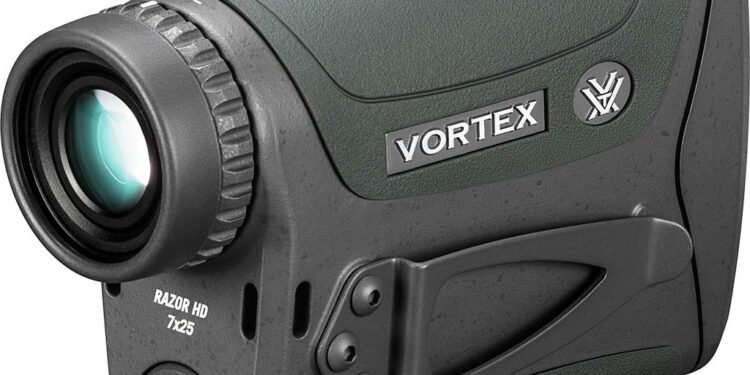By Nick Laufenberg –
For anyone interested in long-range precision shooting, there is a lot of equipment available to enhance your effectiveness. You can find all sorts of gadgets and accessories for your rifle and your shooting kit, including support bags, bipods and optics.
For most applications, the two optics necessary for your success are a precision riflescope and laser rangefinder (LRF). With the multitudes of options out there, the subject can feel daunting at times, and quite often buyers will complete their purchase only to find out soon after they should have gone another route.
PRECISION RIFLESCOPE
There are many important things to consider when picking out the best precision riflescope for your application. It can often feel overwhelming once you “jump down the rabbit hole.” However, if we just take a quick step back and start filtering our options down based on a short list of features and functions, finding the right optic becomes much simpler.
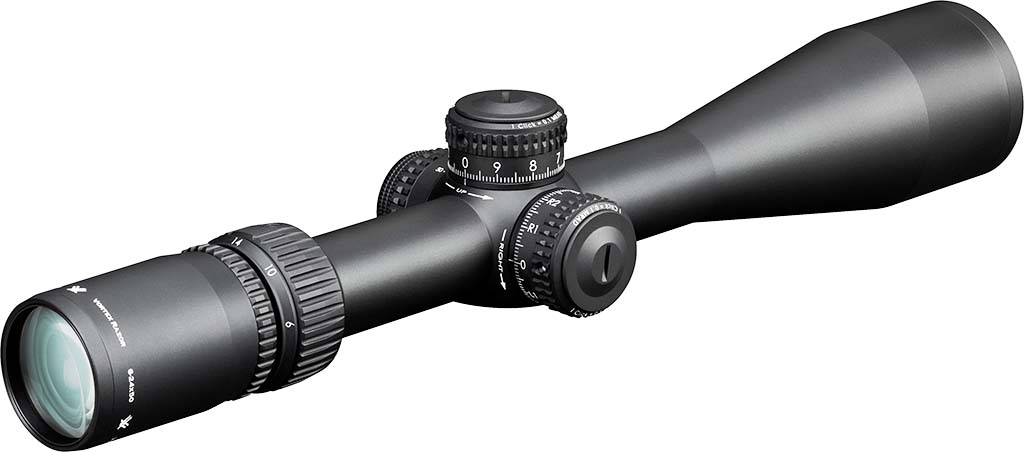
Magnification

When it comes to long-range precision, the question of magnification often comes up first. How much magnification does one need to accomplish the task? Although magnification is often helpful when refining your point of aim, it is not always beneficial optically. As magnification increases, FOV (field of view) decreases, light transmission diminishes, and clarity starts to fall off. Also, atmospheric effects such as mirage usually become much more intrusive and detrimental to overall image quality.
A good way to determine the amount of magnification needed, without going overboard, is to give yourself a scenario. Ask yourself, “What is the smallest target I can imagine being required to shoot with this weapon system?” Then ask, “Without magnification, what is the furthest I would feel comfortable shooting that size target?”
For example, if your smallest target were a 10-inch circle, many would say they would be confident hitting that target without any magnification out to 100 yards. This means that you could be effective with 1x magnification per every 100 yards. If that same 10-inch target was 250 yards away, you should only need 2.5x magnification. If that same 10-inch target were 1,000 yards away, you’d only need 10x magnification.
Perhaps you require more precision than that. Let’s say your smallest target was the size of a golf ball. This requires a much higher level of precision. In this example, perhaps you feel confident out to 25 yards without magnification for a target this small. In this scenario, you’d need 1x magnification per every 25 yards. If that golf ball were 250 yards away, you’d need 10x magnification. If that golf ball were 1,000 yards away, you’d need 40x magnification to be effective.
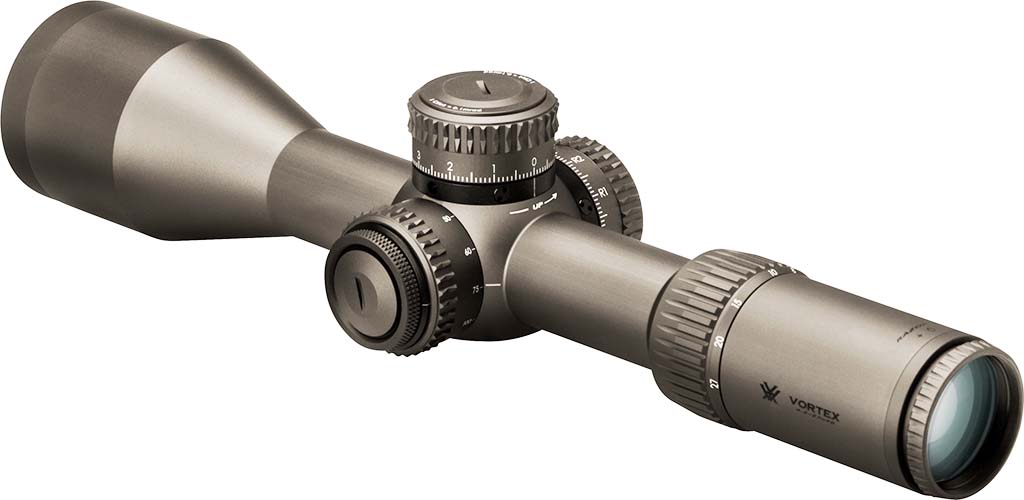
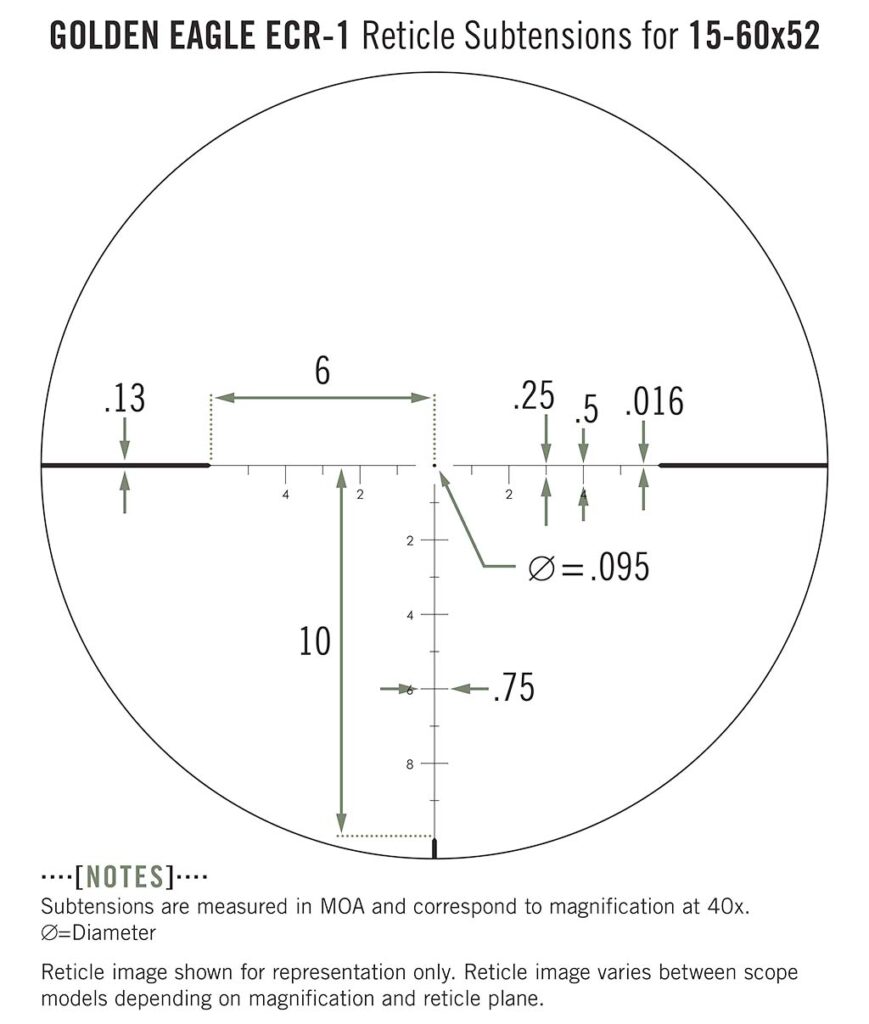
Turrets and Reticle
I like to put these two features into the same group because, in many cases, the design of one can influence the other. A riflescope’s turrets allow you to zero your optic at a given range and can be used to correct for bullet drop and horizontal deflection. The overwhelming majority of riflescopes designed with long-range precision in mind will have exposed, target-style turrets. These are designed for quick adjustment and ease of use.
The other method of correcting for bullet drop and horizontal deflection is to compensate using the reticle. These two methods can be used independently of each other or combined.
The important thing to consider here is, if your reticle design allows you to make these adjustments without the exposed, target-style turrets, you may not need them as a feature. However, if your system has exposed, target-style turrets, you may find yourself going with a simpler reticle design.
These two design features do not only influence each other, but other important considerations such as which focal plane your reticle should be in.
Focal Plane
Another very important feature to consider is which focal plane your reticle is in. This means, when you are adjusting the magnification of your optic, will you be zooming in on the reticle and target simultaneously, or will the reticle appear to look the same throughout the magnification range while your target appears to grow and shrink? Perhaps you are wondering why it matters either way.
If your reticle is in the First Focal Plane (FFP), the subtensions (graduation marks) on your reticle will remain accurate throughout the range of magnification. As you increase and decrease your magnification, both your reticle and target will grow and shrink as they appear closer or further away, remaining scaled evenly to one another. This is a beneficial feature if you plan to use the reticle to compensate for bullet drop and horizontal deflection at any magnification.
If your reticle is in the Second Focal Plane (SFP), any subtensions (graduation marks) available on the reticle will change in scale relative to your target throughout the magnification range. In this case, there will be one magnification, usually toward the top end, intended for accurate scaling. Take, for example, an SFP riflescope with a magnification range of 5-20x. Commonly, this riflescope would be set up with subtensions accurate at 20x. If the reticle were designed to accurately subtend at 20x, and you set your magnification to 10x, the subtensions would double in value because the target would appear half the size in relation to the reticle. Additionally, if you set the magnification to 5x, those subtensions would quadruple in value. SFP is more common with reticles with simpler features.
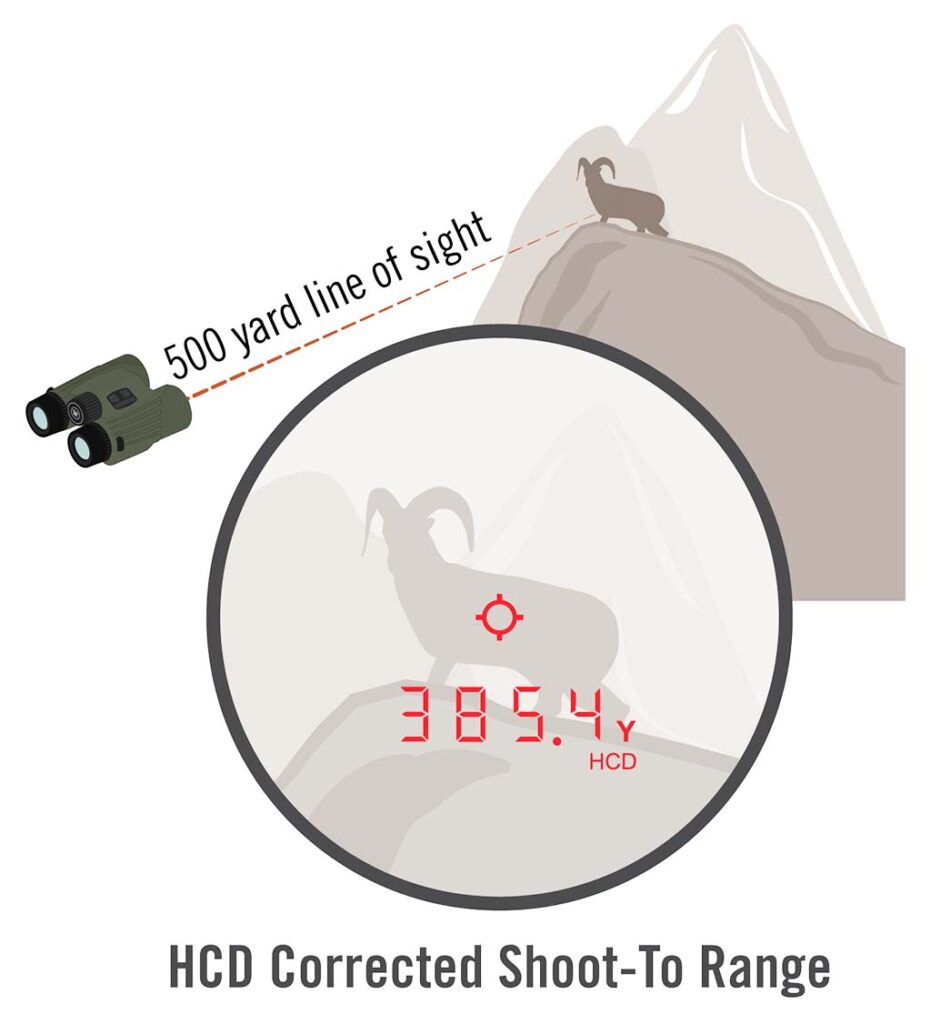
LASER RANGEFINDERS
Although some shooting sports provide shooters the range to their targets, in nearly all practical applications this is not the case. In most situations, shooters will need to determine the distance to the target before taking a shot. There are other methods for determining this distance such as GPS or “milling” with the reticle. However, the use of an LRF is by far the quickest and most convenient. LRFs come in all shapes and sizes, but they can usually be broken down into two primary categories: Monocular and Binocular style. Here are some important things to consider when picking out the right LRF for you.
Max Ranging Distance
Although it is easy to look at the max ranging distance as the primary determining factor in picking out an LRF, it is important to keep in mind the max ranging distance is based on optimal conditions and is not always easy to replicate. Many conditions can alter the effectiveness of an LRF, such as the position of the sun in relation to your target, the target’s color and the target’s density. A good rule of thumb is to purchase an LRF with a max ranging distance approximately double what you need.
For example, if the furthest I would conceivably need to accurately range a target was 1,000 yards, it would be beneficial to purchase a rangefinder with a max ranging distance around 2,000 yards. If the furthest I would need to range a target was 1,500 yards, it would be beneficial to purchase a rangefinder with a max ranging distance around 3,000 yards. This ensures that in the absolute worst-case scenario, your rangefinder will still easily achieve the task. In most cases, this will be overkill. However, it is worth the additional investment.
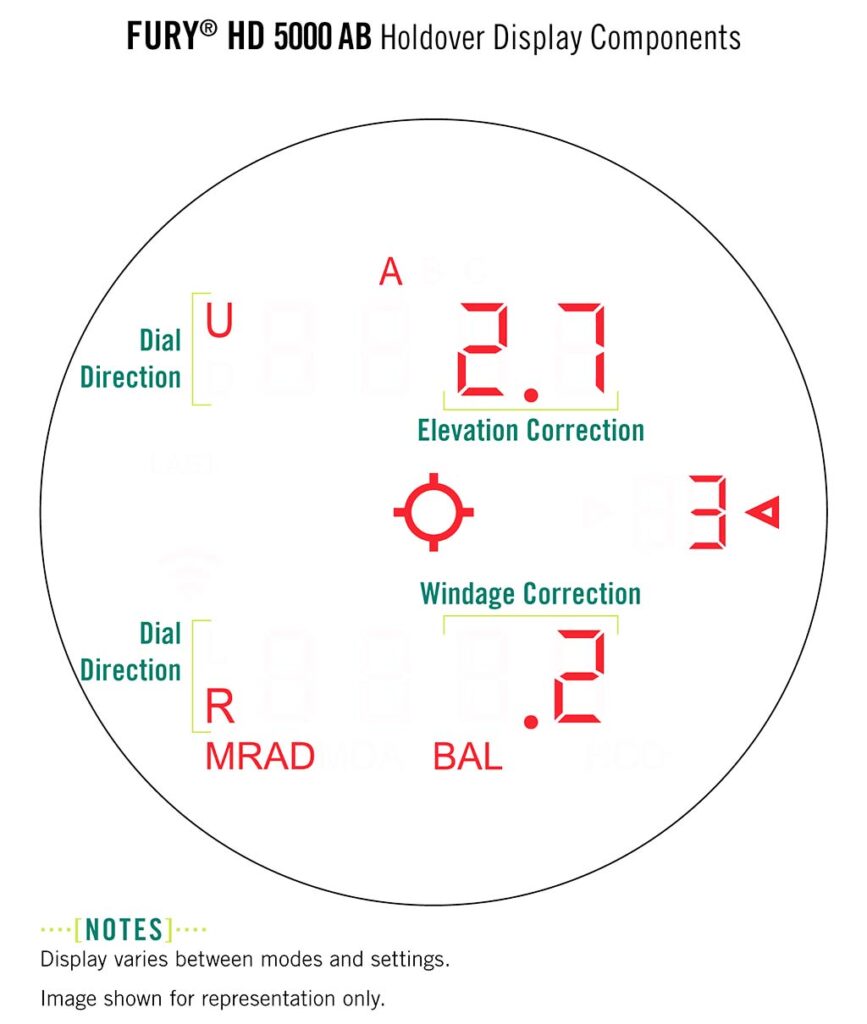
Modes
Depending on the price and intended use of the LRF, manufacturers include a multitude of options to aid in accurate ranging. A few common modes include angle compensation, first mode, last mode and ballistics. An LRF which can compensate for angle will typically allow you to toggle between LOS (Line of Sight) which displays the distance in a straight path between you and the target, as well as your angle of fire, or an HCD (Horizontal Component Distance). HCD can be referred to as many different things depending on the manufacturer. However, no matter the name, they all work on the same principle.
Angle Compensation
HCD mode is using the “Rifleman’s Rule” to account for the approximate distance over which gravity will be affecting the projectile. This can be determined manually by multiplying your LOS distance by the cosine of your angle of fire (LOS x COS(Angle)). The “Rifleman’s Rule” is not perfect; however, it is accurate enough for most applications.
First Mode and Last Mode
First Mode and Last Mode are very helpful when ranging through brush or other dense cover. When ranging with an LRF, the LRF will send out a signal in your target’s direction and receive a signal coming back. This signal will return in the form of many ranges, and the unit must determine which range has the best signal to be displayed.
Typically, the intended target will have the best signal because it is what the LRF is focused on. However, when ranging a target that is either in front of or behind other objects likely to be picked up by the LRF, First Mode and Last Mode can be utilized to tell the LRF which object was your intended target.
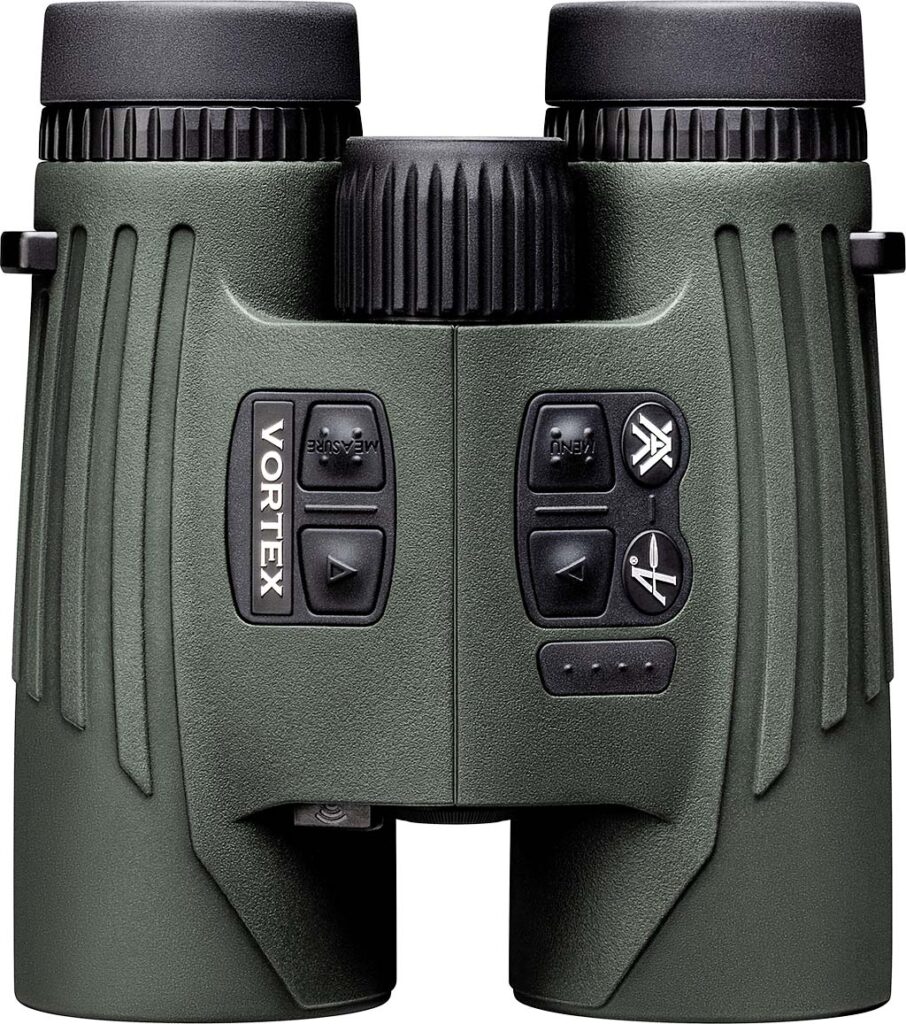
Ballistics
With the advancements in LRF technology, ballistics has become a popular addition to the ever-growing list of options available. Some use simple profiles which roughly match the trajectory of a select group of cartridges. Others pull data from a separate ballistic solver, while some, such as the new Vortex Fury HD 5000 AB laser rangefinder binocular with Applied Ballistics, can range your target, designate the direction of the wind, input the speed of the wind and display the necessary correction to engage that target. This system, being a binocular, is great for locating targets, reading mirage and is easy to pack away when not in use. Systems like this reduce the amount of equipment needed to accomplish your task while simultaneously increasing your effectiveness of getting rounds on target.
| This article first appeared in Small Arms Review V25N3 (March 2021) |



